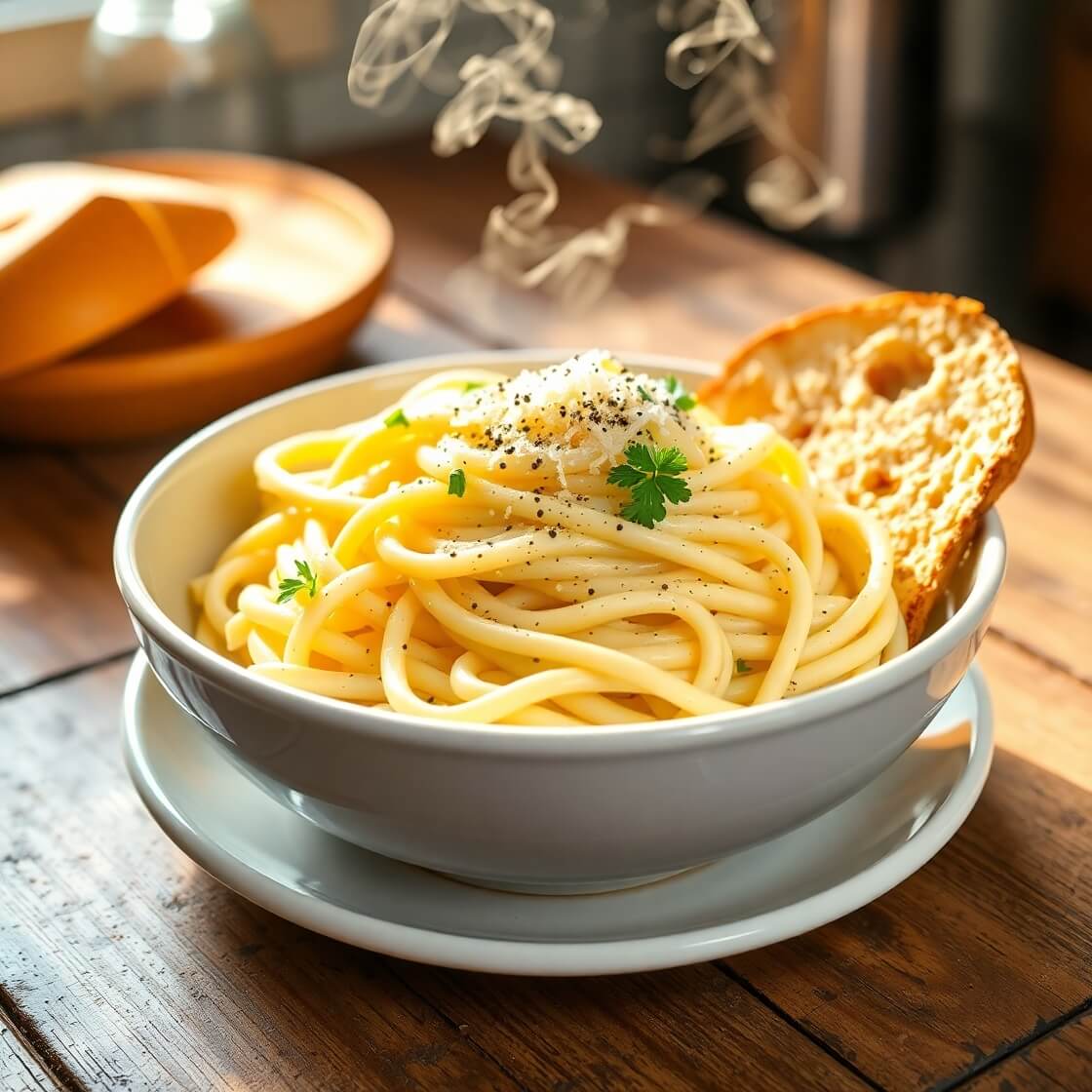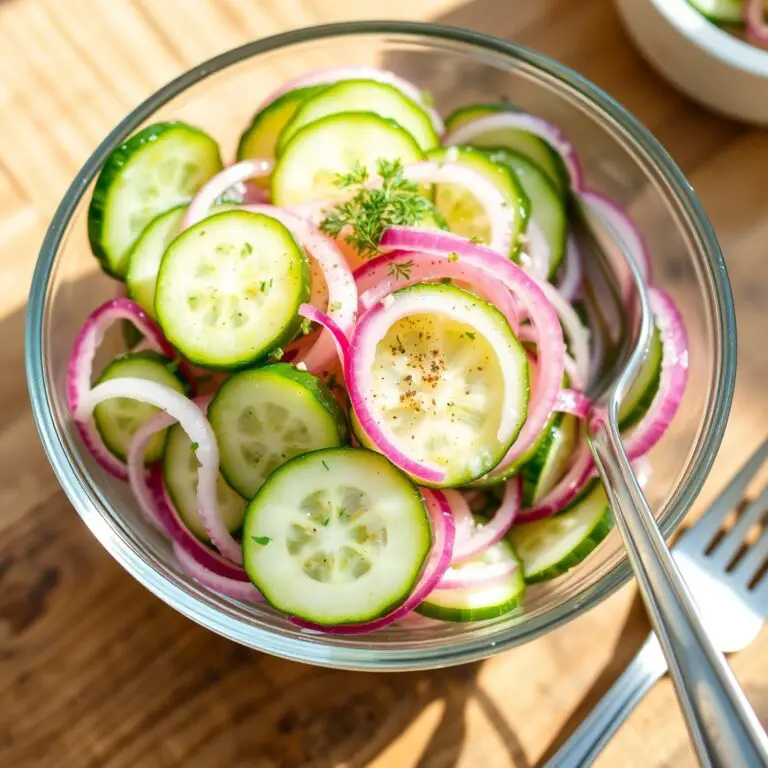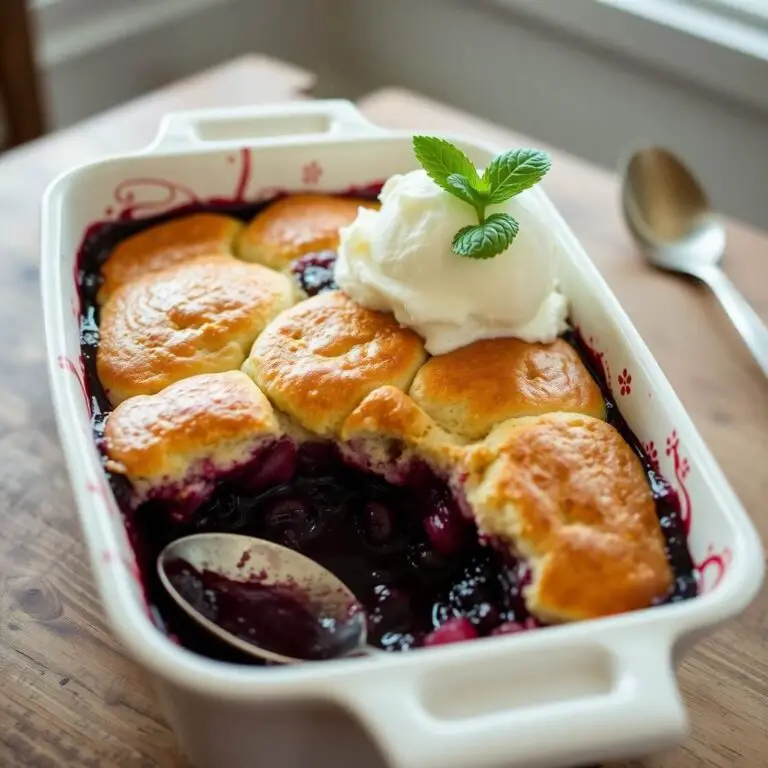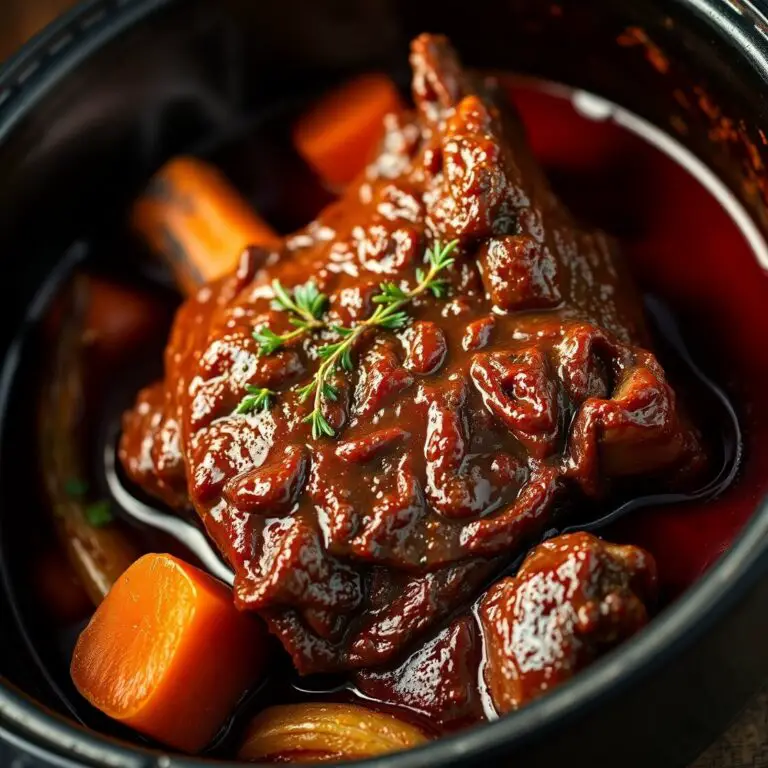
I still remember the first time I made Alfredo sauce from scratch. I was in college, short on time and money, and craving something warm, rich, and comforting. The store-bought jars never quite hit the mark—they were either too salty, too runny, or just… off. One night, I decided to try making it myself using just a few pantry staples: butter, cream, and Parmesan. To my surprise, it turned out far better than anything I’d ever bought.
That’s when I realized how wonderfully simple—and delicious—Alfredo sauce can be. It’s the kind of recipe that proves you don’t need a long list of ingredients or complicated steps to make something truly memorable. Whether you’re pouring it over fettuccine, using it as a base for a creamy chicken bake, or just spooning it over roasted vegetables, this Alfredo sauce is a go-to comfort dish you’ll come back to over and over again.
And the best part? It takes less than 20 minutes from start to finish. So if you’ve ever felt intimidated by the idea of making your own sauce—don’t be. Let me walk you through it, step-by-step.
Why I Love This Recipe
Here’s the thing about Alfredo sauce—it’s magic. With just a handful of ingredients, it transforms a bowl of plain pasta into something you want to savor slowly. It’s creamy, it’s cheesy, and it’s rich without being too heavy. It tastes like something you’d order at a cozy Italian restaurant, but you made it at home. And you made it fast.
What makes this version special is its simplicity. There are no eggs, no flour, no thickeners—just pure, honest ingredients that melt together into velvety perfection. It’s my go-to for busy weeknights, dinner parties, and everything in between. I also love how adaptable it is—you can add garlic, herbs, or even protein if you want to dress it up. But honestly, it’s beautiful just the way it is.
This sauce is a reminder that sometimes, less really is more. It doesn’t try too hard—it just delivers. And once you make it, I guarantee it’ll become a staple in your kitchen, too.
Ingredients for Simple Alfredo Sauce
When I first set out to make Alfredo sauce at home, I was amazed by how few ingredients it actually required. No obscure spices. No specialty groceries. Just the basics—and I bet you already have most of them in your fridge right now.
Here’s what you’ll need to make this creamy, dreamy sauce:
- Butter – I use unsalted butter so I can control the saltiness of the final dish. The butter is the base and adds richness that balances the cheese.
- Heavy cream – This is what gives Alfredo sauce its luscious, silky texture. You don’t want to swap this for milk, trust me. Cream is essential.
- Freshly grated Parmesan cheese – I always stress this: grate your own. Pre-shredded cheese doesn’t melt as well and won’t give you that creamy finish. Parmigiano-Reggiano is the gold standard if you can get it.
- Salt and freshly cracked black pepper – Just a little goes a long way. Salt enhances all the other flavors, and black pepper adds a subtle kick that cuts through the richness.
- Optional: garlic and nutmeg – Some days, I love to sauté a minced clove of garlic in the butter for extra flavor. A tiny pinch of nutmeg can also add warmth and depth without being overwhelming.
That’s it. No flour. No cornstarch. No shortcuts. Just five ingredients working together in perfect harmony.
How Much Time Will You Need
One of my favorite things about this recipe is that it’s lightning fast. You can whip this up in less time than it takes to boil your pasta water. From start to finish, here’s what to expect:
- Prep time: 5 minutes (just grating cheese and measuring ingredients)
- Cook time: 10–12 minutes max
So, total time: around 15–17 minutes.
That’s faster than ordering takeout—and way more satisfying.
How to Make This Simple Alfredo Sauce

Let’s walk through this step-by-step. It’s easy, but there’s a rhythm to it, and once you do it once or twice, it becomes second nature.
Step – 1: Melt the butter
Start by adding the butter to a large skillet or saucepan over medium heat. Let it melt slowly—don’t rush this step. If you’re adding garlic, now’s the time. Sauté the minced clove for about 30 seconds, just until it’s fragrant. You don’t want it to brown.
Step – 2: Pour in the cream
Once the butter is melted and lightly bubbling, slowly pour in the heavy cream. Stir it well to combine with the butter. Let this simmer gently for about 3–4 minutes. Don’t boil it—keep the heat medium-low. We want it to thicken slightly, but not curdle.
Step – 3: Stir in the Parmesan
Reduce the heat to low and gradually add in your grated Parmesan cheese, a handful at a time. Stir constantly. The cheese should melt into the cream smoothly. If it starts to clump, take it off the heat for a moment and keep stirring—it will eventually come together.
Step – 4: Season and finish
Once all the cheese is melted, taste your sauce. Add salt and freshly ground black pepper to taste. If you’re feeling fancy, this is also when you can add a pinch of nutmeg or a little chopped parsley for color.
Step – 5: Serve immediately
This sauce is best served fresh—toss it with hot pasta (fettuccine is classic), spoon it over chicken or vegetables, or just dip a crusty slice of bread into it. Trust me, you’ll want to lick the pan clean.
Substitutions
Let’s say you don’t have heavy cream on hand, or you want to tweak the recipe a bit. There are a few substitutions that work well, depending on what you’re aiming for.
- Half-and-half instead of cream – This works in a pinch, but your sauce will be a bit thinner. If you go this route, simmer it a little longer to reduce and thicken.
- Cream cheese – Some people like to add a bit of cream cheese for a tangy note and extra body. About 2 ounces, melted into the cream, can create a very creamy version.
- Grana Padano or Pecorino Romano – These are great alternatives to Parmesan. Grana is milder, while Pecorino is saltier and sharper.
- Ghee instead of butter – For a slightly nuttier flavor, use ghee. It has a higher smoke point and a deeper flavor.
- Garlic powder or roasted garlic – If you don’t have fresh garlic, a little garlic powder works too. Roasted garlic, mashed into the sauce, can also add amazing depth.
Just remember, the simpler you keep it, the closer you stay to the original Italian feel.
Best Side Dishes for Simple Alfredo Sauce
Because this sauce is so rich and creamy, I like to balance it with fresh or hearty sides. Here are three of my go-to pairings:
- Garlic Roasted Broccoli – The crisp edges and roasted flavor complement the creamy pasta beautifully. Plus, it’s an easy sheet-pan side dish.
- Caesar Salad – A fresh Caesar with crunchy croutons and lemony dressing cuts right through the richness and brings some brightness to the table.
- Crusty Artisan Bread – You need something to mop up all that extra sauce. A good piece of sourdough or baguette does the trick every time.
Serving and Presentation Tips
There’s something almost indulgent about serving Alfredo sauce—it’s thick, creamy, and comforting. But when you present it thoughtfully, it elevates the entire experience. I always say that even the simplest dish deserves a beautiful plate.
Start by warming your plates slightly before serving. Alfredo sauce thickens quickly when it hits a cold surface, so using warm plates helps maintain that silky texture. When plating pasta, use tongs to swirl a portion into a loose nest—this looks elegant and helps the sauce coat every strand evenly.
Garnish with freshly cracked black pepper, a sprinkle of extra Parmesan, and a little chopped parsley or basil for color. You can also finish with a drizzle of good olive oil or a squeeze of lemon for brightness, especially if you’re serving chicken or seafood alongside it. A few flakes of crushed red pepper are great if your guests like a little heat.
If you’re serving it with bread, consider toasting it and rubbing it with garlic for an aromatic, golden touch.
Tips and Tricks to Make This Recipe Even Better

Let’s be honest—Alfredo sauce is simple, but there are a few little secrets that can take it from good to restaurant-level great. Over the years, these tips have made a world of difference for me:
- Use freshly grated cheese – I can’t say this enough: pre-shredded cheese has anti-caking agents that prevent it from melting smoothly. Fresh Parmesan creates that velvety texture you’re looking for.
- Low and slow is key – Never rush the melting process. Keep the heat low when you’re adding the cheese, and stir constantly. High heat can break the sauce or make it gritty.
- Add pasta water if needed – If your sauce gets too thick, a splash of pasta water can loosen it up beautifully. The starch helps emulsify the sauce, making it creamier without watering it down.
- Cook the pasta al dente – Slightly firm pasta gives you the best texture and holds the sauce better. Overcooked noodles can make everything feel too heavy.
- Use a wide pan – This gives your ingredients more room to melt and combine evenly, especially if you’re tossing pasta directly in the sauce.
These tiny adjustments might not seem like much, but together they make a noticeable difference in taste, texture, and presentation.
Common Mistakes to Avoid
Alfredo sauce is easy, but there are a few pitfalls that can trip up even experienced home cooks. Here are the ones I see most often—and how to avoid them:
- Overheating the cream – Boiling the cream can cause it to separate or become grainy. Always simmer gently over medium-low heat.
- Adding cheese too quickly – If you dump it all in at once, it can clump. Add it gradually, stirring in between, to get that smooth melt.
- Using low-fat substitutes – Alfredo is meant to be rich. Swapping in milk or low-fat cream usually results in a thin, watery sauce that lacks depth.
- Skipping the seasoning – Parmesan adds salt, but you still need to taste and adjust. Even a little black pepper or garlic can lift the entire dish.
- Letting the sauce sit too long – This sauce thickens as it cools, so serve it promptly. If it sits too long, it can turn gluey. Reheat gently if needed, and stir in a little cream or pasta water to loosen it up.
By steering clear of these mistakes, you’ll get that smooth, glossy, restaurant-style Alfredo every single time.
How to Store It
Alfredo sauce is best fresh, but if you’ve got leftovers (lucky you!), there’s definitely a way to keep it tasting great.
Transfer the sauce to an airtight container and refrigerate within two hours of making it. It will keep for 3 to 4 days in the fridge. When you’re ready to reheat, do it gently. The key is low and slow.
Avoid microwaving it straight from the fridge—this can cause it to separate. Instead, reheat on the stovetop over low heat, adding a splash of milk, cream, or pasta water to help bring it back to life. Stir constantly until it’s smooth again.
You can freeze Alfredo sauce, but I’ll be honest—cream-based sauces don’t always thaw well. They can become grainy. If you do freeze it, store it in a tightly sealed container for up to 1 month. Let it thaw in the fridge overnight before reheating gently.
FAQ
Can I use milk instead of heavy cream?
You can, but it won’t have the same rich, velvety texture. If you want a lighter version, try using half-and-half and reduce the sauce slightly longer.
Is this Alfredo sauce gluten-free?
Yes! This recipe contains no flour or thickeners—just butter, cream, and cheese—making it naturally gluten-free.
Can I add chicken or shrimp to this sauce?
Absolutely. Grilled or sautéed chicken, shrimp, or even mushrooms make great additions. Cook them separately, then stir them in at the end or serve on top.
What pasta works best with Alfredo sauce?
Fettuccine is the classic choice, but this sauce also works well with linguine, penne, or even gnocchi. Just avoid super thin pastas like angel hair—they don’t hold the sauce as well.
Can I make Alfredo sauce ahead of time?
You can, but it’s best served fresh. If making ahead, store in the fridge and reheat gently with added cream or pasta water to help restore its smooth texture.

Simple Alfredo Sauce
- Total Time: 15–17 minutes
- Yield: 4 1x
- Diet: Gluten Free
Description
A velvety, rich Alfredo sauce made with just butter, cream, and freshly grated Parmesan cheese—this classic Italian sauce is a must-know staple for any home cook. It comes together in under 20 minutes, making it perfect for weeknight dinners, romantic meals, or cozy gatherings. Toss it with fettuccine for a traditional dish or use it as a creamy base for chicken, shrimp, or vegetables. With a silky-smooth texture and bold cheesy flavor, this simple Alfredo sauce will quickly become your favorite go-to comfort recipe.
Ingredients
- ½ cup (1 stick) unsalted butter
- 1 ½ cups heavy cream
- 1 ½ cups freshly grated Parmesan cheese
- Salt, to taste
- Freshly cracked black pepper, to taste
- Optional: 1 clove garlic (minced), pinch of nutmeg
Instructions
- Melt butter in a wide saucepan over medium heat. If using garlic, sauté it in the butter until fragrant.
- Add the cream and stir to combine. Let it simmer for 3–4 minutes on medium-low heat.
- Reduce the heat to low. Add Parmesan cheese gradually, stirring constantly until smooth and melted.
- Season with salt and pepper to taste.
- Serve immediately over hot pasta or store for later.
Notes
- Always use freshly grated Parmesan for the smoothest texture.
- If the sauce becomes too thick, thin it out with a splash of reserved pasta water.
- Serve with fresh parsley, black pepper, and crusty bread for a restaurant-style experience.
- Prep Time: 5 minutes
- Cook Time: 10–12 minutes
- Category: Sauce
- Method: Stovetop
- Cuisine: Italian-American
Nutrition
- Serving Size: 4
- Calories: 410
- Sugar: 1g
- Sodium: 480mg
- Fat: 42g
- Saturated Fat: 26g
- Unsaturated Fat: 14g
- Trans Fat: 1g
- Carbohydrates: 2g
- Fiber: 0g
- Protein: 10g
- Cholesterol: 120mg











